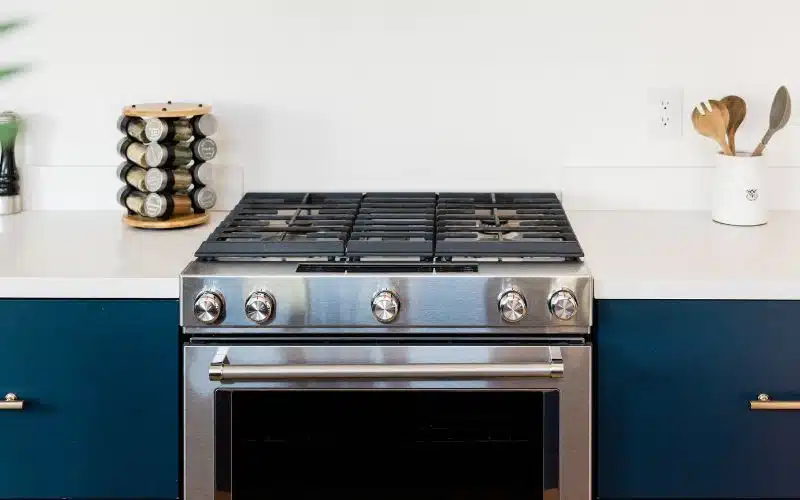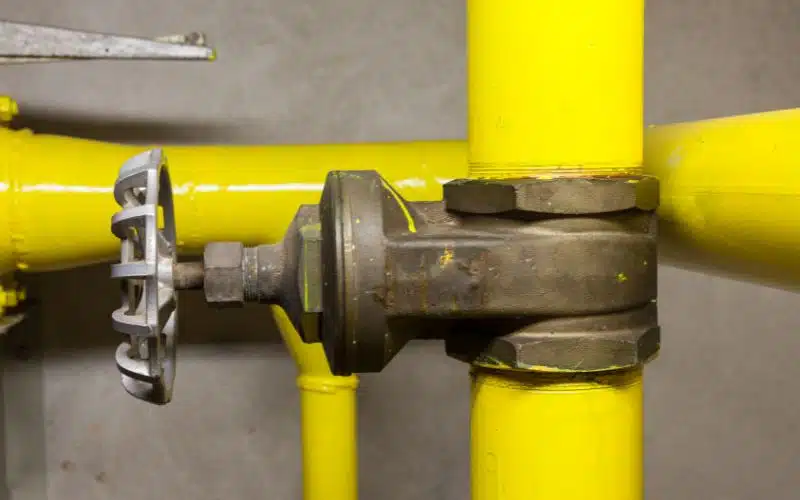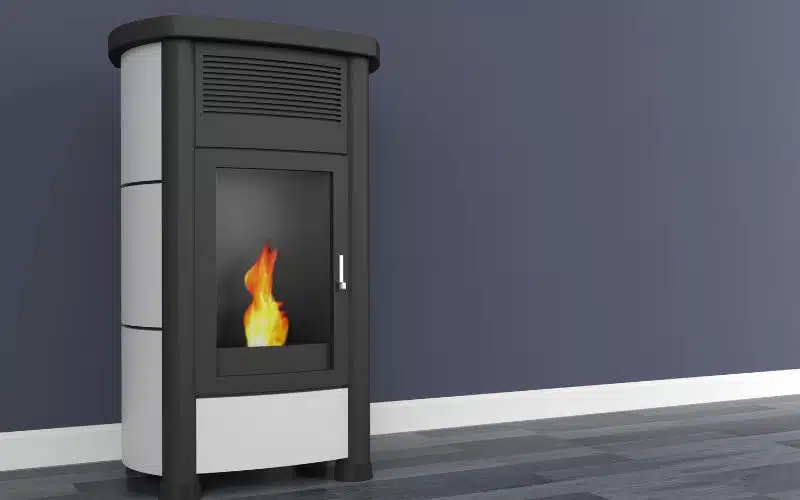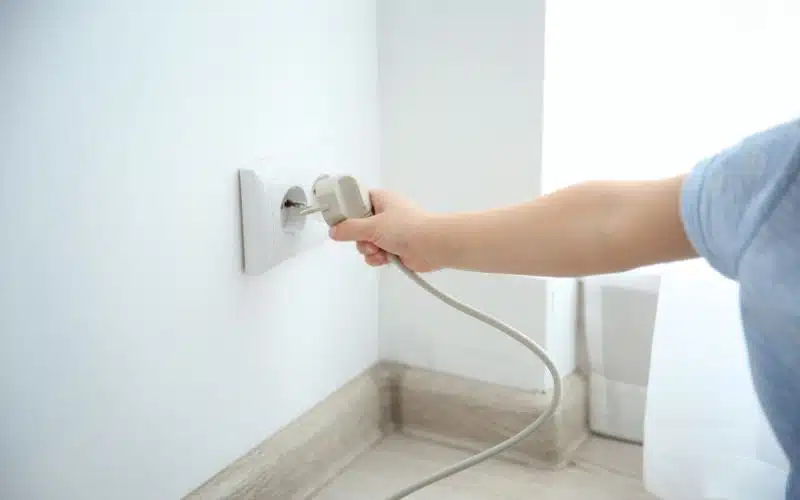When it comes to gas stoves, having a shut-off valve is essential. Even if you’ve never needed to turn off the gas supply to your house, situations where you need to turn off the gas valve, will arise.
For example, situations like renovation and natural disasters might bring about the need to prevent gas leaks.
The designs of gas stoves are very similar, and you’ll find a gas shut-off valve behind them.
The valve depicts both turning on and off, and you can switch it anytime. Meanwhile, what do you do when there’s no gas shut valve behind the stove?
First, your gas appliances should have a gas shut-off valve. But if they don’t, you can check your street gas meter or the gas pipe in your home. Also, you can check the adjacent cabinet or the floor’s narrow opening (crawl space) for ranges. Finally, you can trace where the gas line comes from to locate the valve.
Do You Need a Shut-off Valve Behind the Stove?
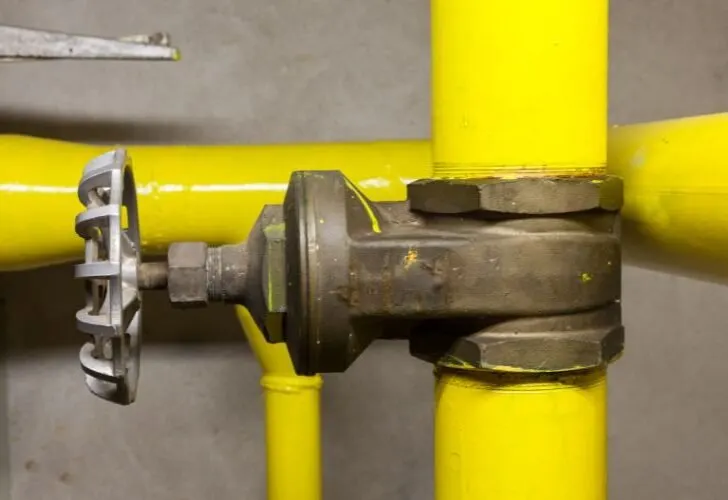
Yes, you do – if you have a natural gas supply running into your home. Having your gas shut valve behind the stove is like easy access to switching off your gas.
However, there are circumstances whereby you’ll need to turn off the gas fast, or else the worst could happen.
A gas leak or damaged gas line can be one of the circumstances. Hence, you need to have a shut-off valve and know how to operate it.
Nevertheless, if you perceive a strong rotten egg smell at home, don’t shut it off yourself. Instead, leave the house and inform the utility company.
Gas leaks can cause health conditions like nausea, fatigue, and headaches, and with more prolonged exposure, they cause vomiting, tummy pains, etc.
Here are a few things to do when you sense the smell of gas:
#1. Open the Windows
Whenever you perceive gas faintly, open the windows for ventilation. Don’t use ventilation fans or light facilities till the room is well-ventilated.
#2. Check the Stove Controls
Check the controls and ensure they’re all off. Switch them off if you find them in the on position.
An immediate explosion is imminent if there’s a gas leak in your home; hence, you must call the utility company.
However, you can find the valve if the gas odor is faint and stop the gas flow. It’s safe to do this if the gas smell is from the stove and oven area and the smell isn’t pungent.
Likewise, if the odor is faint and is within a small area, you can also shut off the gas flow.
What Should You Do When There’s No Gas System Shut-off Valve?
You need to look for the valve location when there’s no shut-off valve on a gas system. Here are some places you’ll find it.
#1. Street Side Valves
The street side valve is also known as the outside valve. You can find them at the gas meters near your house. Besides, the valves are rectangular and located within a cabinet.
#2. House Side Valves
You can find the house-side valves inside your house. They’re ball-like and easy to notice.
You can locate the valve around the entry point where the gas pipe enters your home. Likewise, you can find it before the gas pipe reaches the first gas appliance.
Meanwhile, it would be best if you considered the age of your home when looking for the gas valve.
Older homes may not have the house side valves, while newer homes can have the valves near the furnace or water heater.
Where Should a Gas Shut-off Valve Be Located?
The gas shut-off valve should be on the appliances, home, and street. For example, gas appliances like the gas stove, gas dryer, gas heater, gas fireplace, and a gas furnace should have shut-off valves on the system.
Also, you can locate the street side and house side gas shut valves.
#1. How to Locate the Streetside Gas Shut-off Valve
Find the gas meter outside your house or in a basement after the gas line. Gas meters in basements face a window where it’s easy to read the meter.
Then, you’ll find the valve inside the gas meter rectangular and adjust it with a wrench.
#2. How to locate House Side Shut-Off Valves
You’ll find the house side valves along the iron pipe running to your home. Look for the place where the gas line enters your home first and trace it to the first valve.
You can find the valve just as the line enters the house, far down the pipe, or in an appliance connection.
The valve’s lever is often in line with the pipe when the gas is on and opposite to the pipe when closed.
Consequently, most recent houses have high-pressure gas systems. Their gas supply line is usually a copper pipe instead of the standard iron pipe.
Thus, the main gas shut-off is often before the pressure regulator, near the water heater or gas furnace.
If your home uses liquefied petroleum gas or propane, you’ll have two shut-off valves; the valve on the petrol or propane tank and the valve on the gas line before the first gas appliance.
Do All Ovens Need a Shut-off Valve?
Yes, all ovens need a shut-off valve. The shut-off valve will restrict the gas from getting to the gas ovens.
As for electric ovens, the valve is responsible for preventing them from overheating and catching fire. The gas shut-off valve can either be on the stove or the gas line.
However, ovens with clock control shut off automatically after 12 hours. So if you leave your electric oven on accidentally, you can be assured that it’ll turn off itself.
Ovens with timers also have this feature, but it’s not extended to gas ovens. So in the case of gas ovens, you’ll have to turn it off manually unless there’s a fault in the thermostat that allows it to go off automatically.
Here are several types of ovens and their most prominent features:
| Ovens | Features |
|---|---|
| Convection ovens | Saves EnergyGas or electric shut-off valves/ control knob |
| Toaster ovens | TimerShut off valves or control knobAutomatic shut-offTemperature setting |
| Conventional oven/Regular/Traditional | Shut-off valves to sources of heat gas or electric |
| Microwave oven | TimerAutomatic shut-off control knob or shut-off valve temperature control |
What to Do When Missing Range Gas Shuts off
Locating your range and other gas appliances’ gas shut-off valves is advisable. Thus, if you perceive the gas odor, you’ll find the valve quickly to stop the gas.
The building codes require the gas shut-off valve to be within 6 feet of the appliance, but if yours is different, you need to install a shut-off valve.
You can call on a technician to install the appliance shut-off valve that’ll make it easy and worry-free to use. The range shut-off valves are usually behind or in front of the appliance.
But if you can’t find the valve, you can check it behind the stove:
- First, open the drawer beneath the oven and remove the content.
- Next, use a torchlight to look for the shut-off valve.
- Finally, check neighboring cabinets or a crawl space beneath the stove if you can’t find it there.
In addition, you can check the gas meter beside your house for the valves if you can’t find them in your home.
The valves are generally in a cabinet, so check for them. If your range uses propane, you can stop the gas flow from the tank if you can’t find the shut-off valve.
Bottom Line
Gas shut-off valves are one of the safety features to prevent the hazards of gas appliances. However, the need to locate your shut-off gas valves is essential.
So, you can prevent emergency gas situations and use the appliances peacefully.
Your gas appliances should have shut-off valves, but what if they don’t? Then, you should know the other shut-off valves’ locations.
